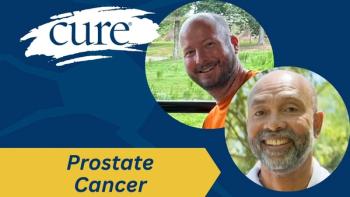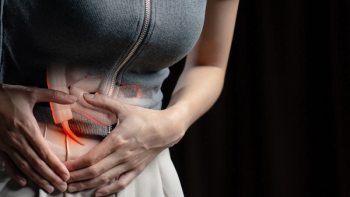
The Challenge of Finding Out What My Cancer Type Was
Key Takeaways
- Stage 4 neuroendocrine carcinoma diagnosis led to extensive surgery, revealing neuroendocrine islet cell carcinoma, a rare pancreatic cancer.
- Lifelong chemotherapy and peptide infusions are required, with 14 days of exhaustion each month, yet no definitive end date is given.
Before I underwent surgery to remove tumors on several organs, I was told it was the only way to determine what cancer I had.
“Don’t cry. You can do this. You’re strong. This isn’t how your end is supposed to happen,” I repeated to myself while being wheeled past the faces of nurses who were giving me encouraging smiles and thumbs up.The tears quietly streamed down my face as I thought of my five young children who still needed a mother to guide them through so much of this life.
So many questions were unanswered as I entered the operating room. How long would my surgery take? Possibly eight hours, possibly less, possibly more. Where did the cancer originate from? The tumors had spread and attached themselves to so many areas of my organs that they were not going to know until surgery. The only answer I had was that it was stage 4 neuroendocrine carcinoma. There was no way to know my prognosis or treatment without the surgery providing answers.
The CT scans couldn’t adequately show the size of the main or satellite tumors, but the surgeon had already warned me of a possible Whipple and the loss of some of my liver, kidney, adrenal gland, small intestine and large intestine. This cancer was so rare that the surgeon explained he could not provide more answers until surgery and that I would have to wait to see the only specialist in the field at the Markey Center once I was released from their care.
Dr.Lowell Anthony was said to be the magician: the man who understood this unlikely cancer. It would be six weeks after surgery before we would meet. During that time, I would spend countless hours researching the treatment plans for neuroendocrine carcinoma. The efforts were futile since treatment was completely dependent on where the cancer originated from.
I awoke to a gastrointestinal (GI) tube and concerned nurses surrounding me, trying to stop the bleeding in my wrist from the pulse monitoring line that had been placed. My surgery had been even more extensive than I imagined. I lost a large amount of my small intestine, endured a pancreatectomy, the right lobe of my liver, multiple spots that were treated with microabrasion and a sector of my large intestine. However, some of the tumors were in crucial areas and could not be removed. My rib cage had to be spread so far open that a couple of ribs were fractured. Still, I reminded myself I would have answers now.
It wasn’t until the surgeon came to check on me later that he explained the main mass was 14.2 by 10.11 by 8.5 centimeters and was so involved that he could not determine if it began in the intestinal tract or the pancreas. I would have to wait until the specialist sent the sample for bio testing to determine the answer. With more than 30 staples holding my flesh together from my sternum to my pelvis, there were other things to focus on.
The GI tube was irritating but necessary to give my intestinal tract time to heal. No food or drink followed for the next five days. Only ice chips, which I greatly looked forward to. I knew the importance of movement to keep blood clots from occurring, so the following day, I began walking.The nurses were surprised by my daily ventures. Throughout this time, the thought of my young family kept me motivated to be strong and move through the pain. Shots in the stomach three times a day and multiple blood draws were the norm. A bonus was my propensity to be a hard stick, so an ultrasound machine had to be used to locate possible entrance sites.Twice, the night phlebotomist didn’t verify that my blood was sent through the shoot to the lab and redraws had to be done.
On average, it was three sticks before they could retrieve the blood needed. On my seventh night there, they came and retrieved me at 2 a.m. to take me for an MRI scan because my liver seemed not to be functioning correctly. This was the longest 45 minutes of my life. I lay on my back with stables being pulled in a narrow tube that felt like oxygen wasn’t flowing to the top. I wanted to break, I wanted to cry, I wanted to scream, this has all been enough.I didn’t, though, because a sudden calmness came over me and I knew this moment would pass just like all the other hardships that had come.
Recovery has not been easy, especially when there is a family that still needs their mother in so many ways. I found out after the bio testing that I suffer from neuroendocrine islet cell carcinoma. Pancreatic cancer, which makes its rate of existence around 3%. I will be on chemo for the remainder of my life, along with peptide infusions. It hasn’t been the easiest news to accept that 14 days of every month are filled with such exhaustion, but the news could have given a definite end date. That I do not have.
My body is doing well with treatment, and I work tirelessly each day to try and give my family the most normal life they can have. I do not allow my cancer to define me, but I would be remiss in saying it doesn’t affect me and the way I view things. I feel peace and serenity in the life that I am leading. I have left my career at a university to focus this time on the joy around me. I’m taking this time to complete my first novel and give myself to my family in every way that I physically and emotionally can.
Life is very different, but it isn’t a bad life. I am a zebra now, and that has given me a strength I never knew existed within me. I have been fortunate to have found the support system that surrounds me. We can’t take this diagnosis as an end; we must view it as a new beginning to a different way of living. I hope anyone suffering from a chronic disease or illness can find that peace. It makes each day fulfilling and that is a life worth living.
This story was written and submitted by Miranda L. Anderson-Cromer. The article reflects the views of Anderson-Cromer and not of CURE®. This is also not supposed to be intended as medical advice.
For more news on cancer updates, research and education, don’t forget to




